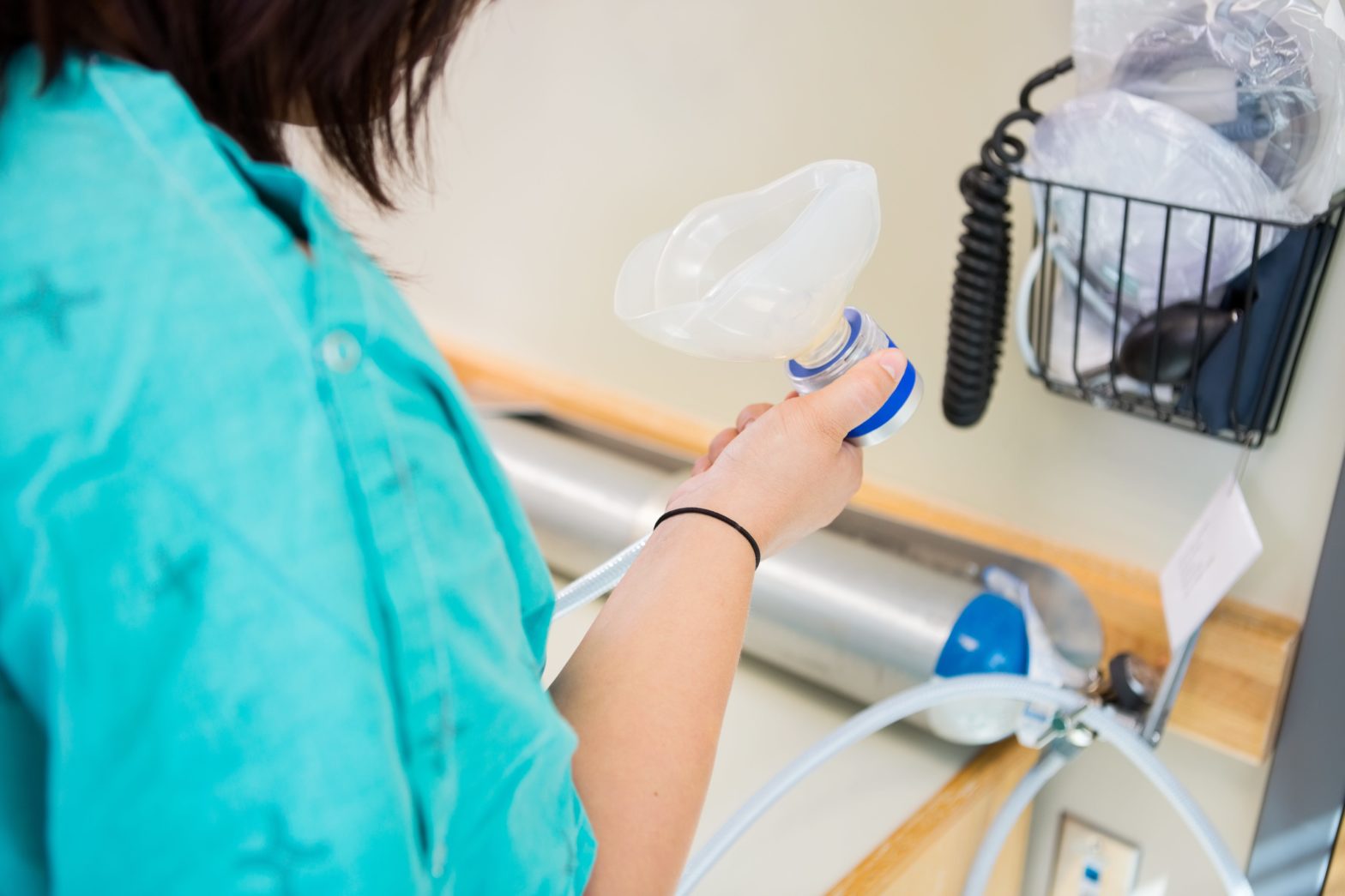![A patient holds a nitrous oxide mask. [Santa Rosa Medical Center | Special to the Press Gazette]](http://127.0.0.1/wordpress/wp-content/uploads/2022/01/ghows-DA-686926b9-e48a-5b3e-e053-0100007f1481-5dd7d9ac-scaled.jpeg)
MILTON — Laughing gas isn’t just for dentist offices anymore. Santa Rosa Medical Center has found a way to use nitrous oxide as an alternative to pain medication in the emergency room and in labor and delivery.
According to ER Director Jana Lyner, SRMC is the only hospital in the area to use this technology. The Pediatric Intensive Care Unit at Sacred Heart Hospital in Pensacola has the ability to use nitrous oxide on patients, but not to the scale SRMC does. Nitrous oxide is used more frequently on the east coast.
Arthur Sumrall, the previous emergency medical director, brought the technology to Lyner’s attention a little more than a year ago. Lyner was on board with the idea, and brought Cardio Pulmonary Director Scott Perry in on the plan.
“We use it several different ways,” Lyner said. “It’s the safer alternative to medications, and for children. A lot of the medications can cause respiratory depression and can cause them to physically be ill.”
Nitrous oxide is given to patients who are undergoing procedures such as getting stitches, a close reduction on a broken wrist, or getting a cyst lanced. The ER uses the laughing gas with children mostly, and a respiratory specialist must be present. Lyner said the gas is effective with special needs children who have anxiety and experience pain differently.
“As soon as the procedure is over and the patient breathes regular air, the nitrous [oxide] leaves their body,” Lyner said. “The patient is ready to go a lot quicker. With medication, you would hold them 1.5-2 hours post medication. With nitrous [oxide], as soon as they breathe air for 5-10 minutes, they’re back to normal.”
After many meetings with physicians, directors and the SRMC board of directors, and several months of clinical orientations with the company that provides the equipment, the hospital was ready to implement the technology. In fact, the ER was able to use nitrous oxide on a young patient just hours after training, according to Perry.
In labor and delivery, nitrous oxide is also used for pain control. According to Lauren Pennell, director of labor and delivery, many mothers choose this alternative when wanting to give birth naturally but wanting some pain relief.
Nitrous oxide can be administered at any point during labor, and the mother can control the dosage by bringing the mask to her face when she decides she needs it. The medication has no effect on the baby’s heart rate and is a safer alternative to the previously used intravenous narcotic Fentanyl.
If the mother decides the gas isn’t working and she needs something more, within just two minutes a different medication can be administered.
“It’s a fantastic option; it’s very flexible," Pennell said. "It’s not widely known, so we do a lot of education when they come in.”
Nitrous oxide doesn’t have the same side effects as other medications. Therefore, it lengthens the bonding time between the mothers and their infants by avoiding the nausea, fatigue or numbness mothers feel with narcotics.
The amount of nitrous oxide needed depends on each patient’s needs. Not everyone is able to utilize this technology, though. Those with preexisting lung diseases, abnormalities with the lungs or thorax area, open wounds on the face near where the mask would sit, and those with vitamin deficiencies are unable to use the gas.
Aside from being a safer alternative to medication, nitrous oxide is also cost effective. Patients only pay a procedure fee without having a medication fee, and their time spent in the hospital is shorter.

This article originally appeared on Santa Rosa Press Gazette: Not just for the dentist office
